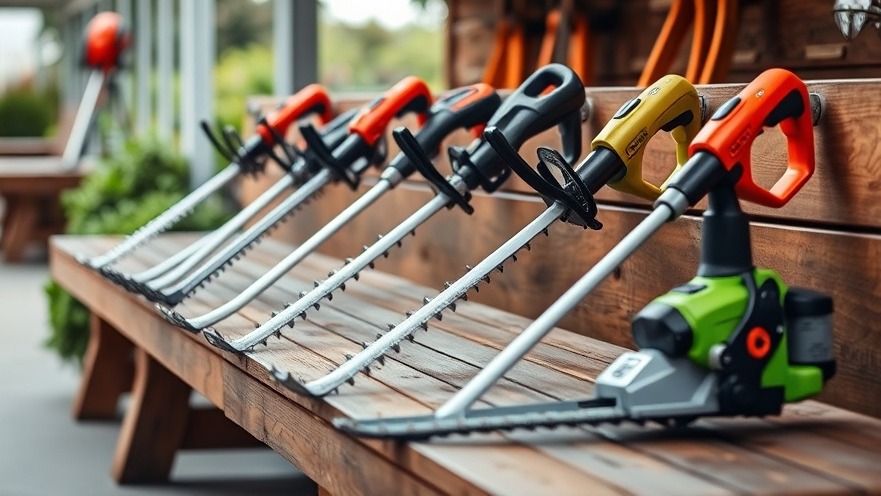
Cultivating Green Spaces with Hedge Trimmers
In the quest for beautiful gardens and sustainable living, hedge trimmers have emerged as crucial tools for homeowners who value aesthetics and ecological responsibility. Hedges do not merely serve as boundaries for properties; they are essential components of our ecosystem, providing habitats for wildlife and reducing noise pollution. The right hedge trimmer can transform the often arduous task of maintaining these plants into an efficient and pleasant experience.
Why Hedge Trimmers Matter for Eco-Conscious Homeowners
As more homeowners strive for eco-friendly gardening practices, the choice of tools plays a significant role. The best hedge trimmers can help gardeners maintain their plants without disturbing the surrounding environment. Electric and cordless hedge trimmers are particularly appealing for their reduced carbon footprint compared to their petrol-powered counterparts. These electric options are quieter and generate no emissions, aligning perfectly with the goals of sustainable home design.
Choosing the Right Type of Hedge Trimmer
When selecting a hedge trimmer, the first decision homeowners face is which type suits their gardening style. There are three predominant types:
Cordless Hedge Trimmers: Ideal for smaller trimming jobs, cordless models like the Flymo 18v EasiCut 450 offer mobility and ease of use without the hassle of cords.
Electric Corded Hedge Trimmers: An excellent option for extended use, reducing battery worries while providing ample power.
Petrol Hedge Trimmers: Best suited for large properties or professional landscapers, although they come with higher environmental costs due to emissions.
In 2025, options such as the Stihl HSA cordless hedge trimmer and the Vonhaus 20V Max Hedge Trimmer are excellent choices that combine efficiency with user comfort.
Maintaining Wildlife-Friendly Hedges
One of the essential aspects of hedge trimming for eco-conscious gardeners is timing and technique. To protect local wildlife, be mindful of breeding seasons, which typically occur between March and August. Always check for nests before trimming, as disturbing them can lead to legal repercussions and harm local fauna.
Future Trends in Eco-Friendly Gardening Tools
As we move further into 2025, innovations in gardening tools continue to prioritize sustainability. The integration of solar-powered equipment and enhanced battery life in cordless trimmers is revolutionizing the gardening landscape. Homeowners can expect greater efficiency and longer runtimes, making it easier to maintain eco-friendly gardens.
Benefits of Eco-Friendly Gardening Tools
Choosing sustainable gardening tools like hedge trimmers not only benefits your garden but also contributes to broader environmental goals. These tools facilitate actions towards:
Improving energy efficiency through lower power usage.
Encouraging biodiversity by creating better habitats for local wildlife.
Reducing greenhouse gas emissions compared to traditional petrol tools.
Switching to eco-friendly products is an integral part of a zero-waste lifestyle and supports water conservation efforts by creating healthier, more resilient landscapes.
A Call to Action: Transform Your Garden Today!
If you're an eco-conscious homeowner looking to enhance your garden’s sustainability, consider investing in a quality hedge trimmer that aligns with your values. Not only will you enjoy a more inviting outdoor space, but you'll also take a significant step toward reducing your environmental footprint. Explore our recommended hedge trimmers today to start your journey towards a more sustainable garden!
 Add Row
Add Row  Add
Add 




Write A Comment